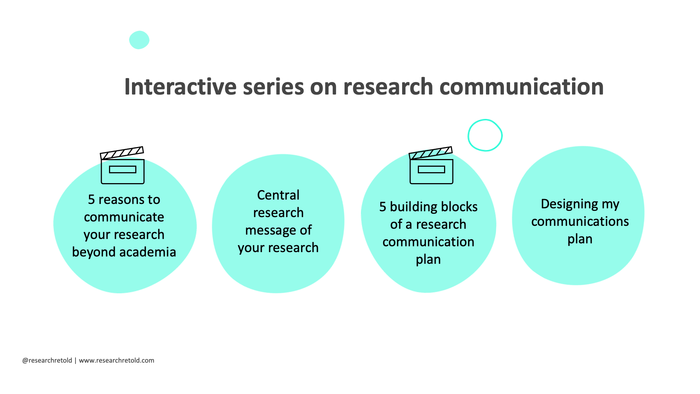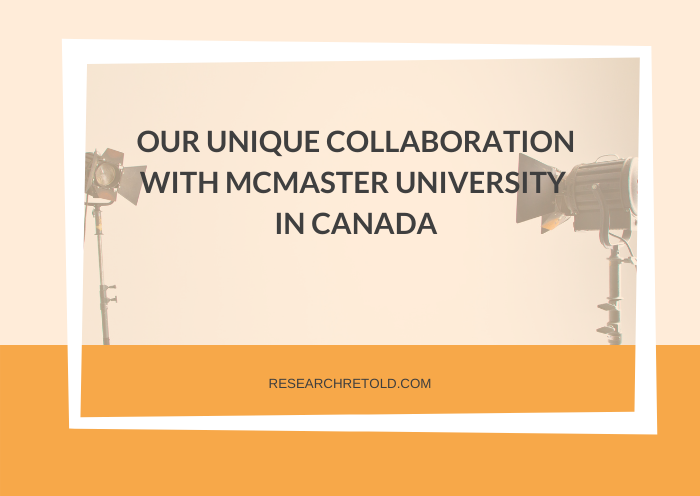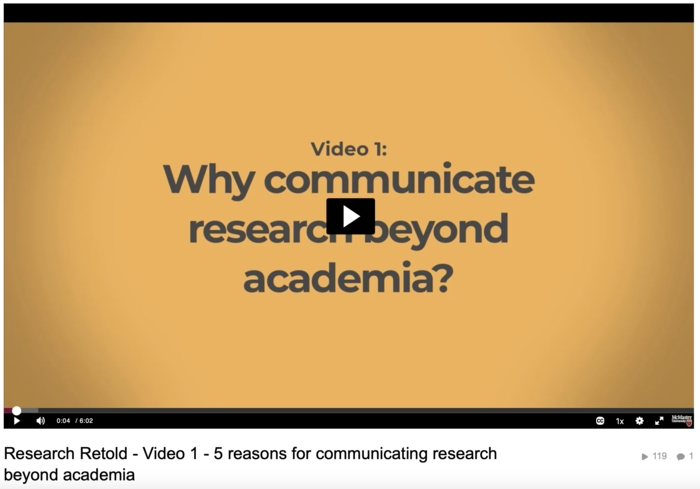In this blog post, we share our first and unique collaboration with McMaster University.
We cover the context of the collaboration, the unique format and content that we delivered for them, and the impact it has achieved.
We hope this blog post inspires you to think creatively about your collaborations and to take full advantage of the possibilities offered in our current virtual climate.
The initial enquiry of support
In February 2020 we were approached by a representative from McMaster University enquiring about our research communication workshops. The plan was for our director Mihaela Gruia to travel to Canada to deliver the workshop in person, as per our usual offering. At the time the team was still awaiting confirmation of funding and the anticipated date for delivering the workshop was November 2020.
The prospect of delivering a workshop in person at the time was not only likely but seen as the go-to option. However, when the pandemic hit in March 2020, we were forced to reimagine the collaboration.
In a brainstorming session, our team and the team from McMaster University put their heads together to figure out a solution for delivering the workshops virtually. The researchers were interested to think of a creative way of presenting the material.
Instead of simply delivering the workshop in a three-hour virtual format, we decided to split the content and create an interactive series of research communication sessions.
The purpose of our collaboration
Our collaboration aimed to help researchers communicate their findings in accessible and visual ways. To do this, we shared a step-by-step process for creating a communications plan, as well as tools and resources for them to be comfortable articulating the key message of their research. At its core, this is the content of our face-to-face interactive workshop on ‘Designing a communication plan’.
Our workshops are interactive and they combine theoretical components with practical activities:
- There is a mix of pair, group and individual work.
- Participants can apply the theoretical aspects of the workshop directly to their research during the workshop.
- We also prompt participants with questions to get them thinking about their research in a new way.
A unique format of delivering content
The uniqueness of this collaboration was that we repurposed the structure and content of the workshop into a four-component collaboration, which included 2 videos and 2 live sessions.
1. Video: five reasons to communicate research beyond academia
A short video covered five reasons to communicate research beyond academia and the benefits of communicating one’s research.
This introductory video was used to generate signups for the live session. Moreover, it included details about the upcoming events and videos.
“The video was very insightful and got me think about why I do research.”
The video also included a practical task asking people to think about the central message of their research and complete a corresponding worksheet.
2. Live session on the central message of your research
After releasing the video, registered participants were invited to attend a live session discussing the central message of their research.
In this session, we discussed the reasons to communicate research beyond academia mentioned in the video and had a lively discussion about the benefits of doing so. Following on from this we explained the concept of a 60-seconds central research message. We encouraged participants to volunteer and pitch their research to the rest of the group, receiving live feedback from the workshop facilitator on what went well and what they can improve on. This session was attended by 27 individuals working in research, communication and administration roles at McMaster University.
“My favourite aspect of the workshop was being put in the position of having to define the main focus and purpose of my research.” A. Cannon
3. Video: 5 building blocks of a communications plan
The second video covered the theoretical aspects of building a communications plan, structured into the five building blocks– goals, audience, messages, timing, channels and formats). Moreover, the video included information about the next and final live event. Finally, we created a practical task asking people to think about their research and how they can start developing their own communications plan in a worksheet.
“The video was excellent and it helped me to complete the pre-workshop worksheet.”
4. Live session on developing a communications plan
The final live session of the collaboration brought the researchers together to discuss their own communications plan and get feedback and support from each other as well as from the workshop facilitator.
In addition to the five building blocks of the communications plan, we also discussed the resources, risks, and success metrics that the researchers would need to pay attention to.
The second session was attended by 15 researchers. The workshop was intimate and the researchers were able to ask questions and get tailored support.
“My favourite part of the workshop was the chance to talk with participants; this helped me to digest presentation.” G Hooks
Lessons learnt from this format of delivering workshops
1. Communication is key
This collaboration was a completely new way of doing things. It was crucial that both teams, from Research Retold as well as McMaster University, that we were well aware of what the collaboration entailed and the materials that needed to be produced.
Having a clear idea of who is involved, who needs to offer sign off, and who is in charge of uploading the materials on the technical side of things, speeds up the process and ensures a smooth delivery.
2. Video is an effective method of delivering information
Creating the two videos allowed us to create resources that packed a lot of useful information in a short space of time. Moreover, the added benefit is that the participants can refer back to the material. Those who couldn’t attend can benefit from the information presented in the video at a later stage as well.
3. Pairing a video with a live session can be effective
Pairing video with live sessions can be really effective to have people engaged over a longer period. The video packs a lot of information in a short space of time, and in the live sessions people can bring in their specific questions and challenges to be discussed in a group setting.
Looking back on our collaboration, which spanned two weeks, we would shorten the amount of time between videos and live sessions. We decided to leave two weeks between the sessions so as to allow for more time to digest the material. Having said that, it’s important to sustain interest and strike whilst the iron is hot, so to speak.
Many thanks to the Sherman Centre for Digital Scholarship and the Centre for Research in empirical Social Sciences at McMaster University for collaborating with us and we hope this is the start of a fruitful collaboration in the future, as well as a new way of delivering material.
If you’d like to organise a similar series for your university, please get in touch at contact@researchretold.com

